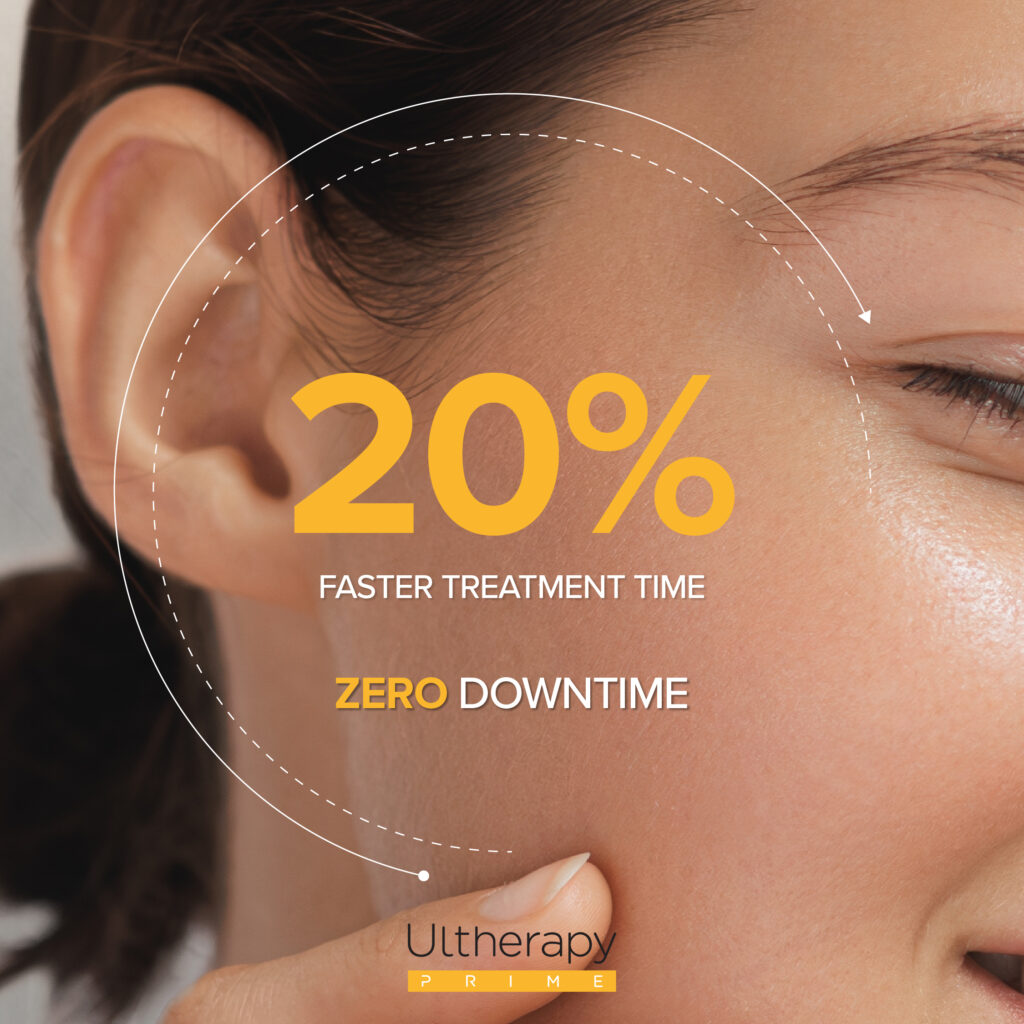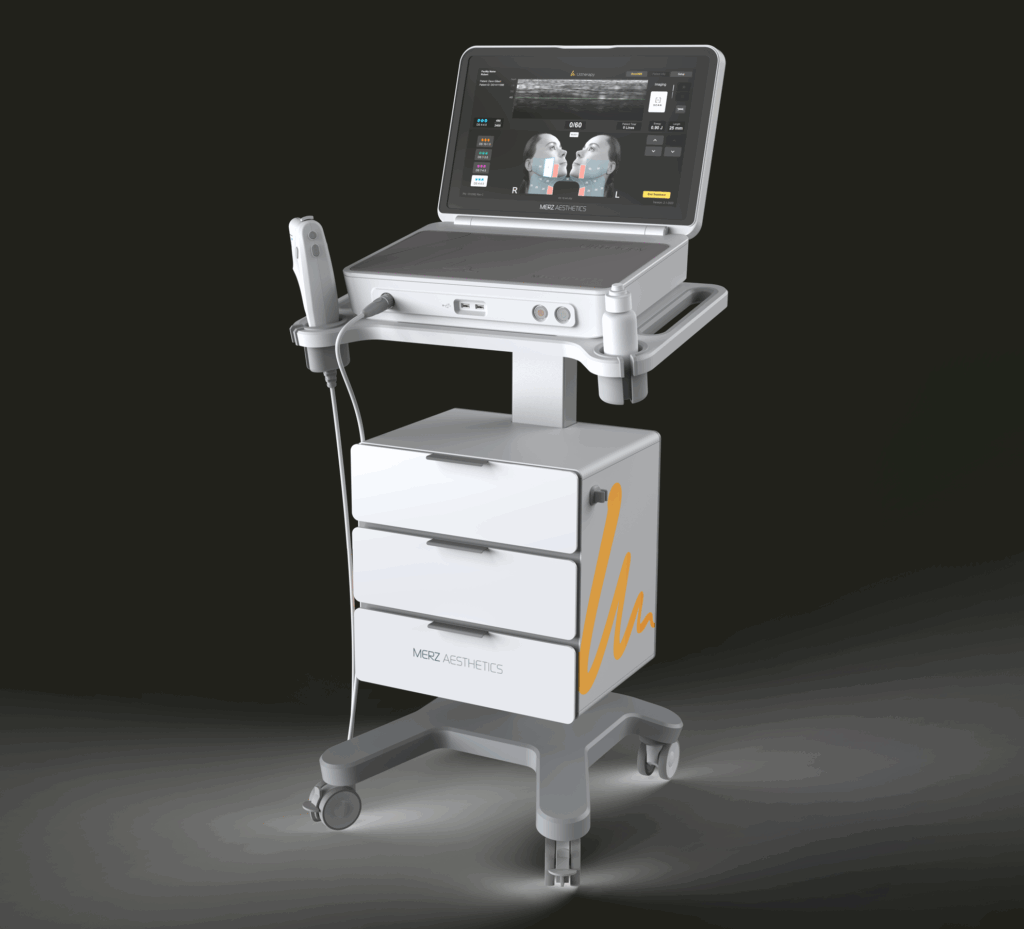Ultherapy Prime is a non-surgical, non-invasive cosmetic treatment used to tighten and lift the skin on the face and neck. It uses focused ultrasound energy to stimulate the production of collagen, a protein that gives skin its firmness and elasticity. As we age, collagen production decreases, leading to looser, sagging skin. Ultherapy Prime is considered a second-generation version of Ultherapy, offering enhanced visualization and customization for more precise treatment.

How it works:
- A smooth applicator emits microfocused ultrasound waves that target specific dermal layers (deeper layers of the skin) at precise temperatures.
- Real-time ultrasound imaging allows the practitioner to target treatment areas with precision, ensure proper depth and contact with the skin to produce optimal results.
- This controlled heat stimulates collagen production, encouraging your body’s natural renewal process.
- Increased collagen levels lead to tighter, firmer skin with a more lifted appearance.
What it treats:
- Ultherapy Prime is primarily used to address mild to moderate skin laxity in areas like the brow lines, cheeks, jawline, chin, and neck.
- It can also improve the appearance of fine lines and wrinkles in these areas.
Benefits:
- Non-invasive:
- No needles, incisions, or surgery are involved.
- Minimal downtime:
- Most people experience redness and swelling that resolve within a few days.
- Natural-looking results:
- Gradual improvement over 1-3 months with long-lasting effects (up to 12-18 months).
- FDA-cleared:
- Safe and effective for specific areas of the face and neck.
Good candidates for Ultherapy:
- Age:
- Typically individuals in their 26 to 65 experience visible skin laxity that Ultherapy can effectively address. However, age isn’t the sole factor, and younger or older individuals with suitable skin qualities can also benefit.
- Skin concerns:
- You’re likely a good candidate if you have mild to moderate sagging skin, particularly in areas like the brow lines, cheeks, jawline, chin, and neck. Additionally, if you have fine lines and wrinkles in these areas, Ultherapy can help improve their appearance.
- Realistic expectations:
- Remember, Ultherapy provides gradual, subtle improvements and shouldn’t be expected to drastically alter your features or replicate the results of surgery. Realistic expectations about the achievable outcomes are crucial for a positive experience.
Important points to consider:
- Ultherapy is not a substitute for facelift surgery. It provides subtle improvements and is best suited for mild to moderate skin laxity.
- Multiple treatments are often needed for optimal results.
- Individual results may vary, and it’s crucial to consult a qualified healthcare professional to discuss your suitability and expectations.
- Potential side effects include temporary redness, swelling, tingling, and tenderness.
If you’re interested in learning more about Ultherapy Prime or its potential benefits and drawbacks, it’s always best to consult with a qualified healthcare professional. They can assess your individual needs and determine if it’s the right option for you.


